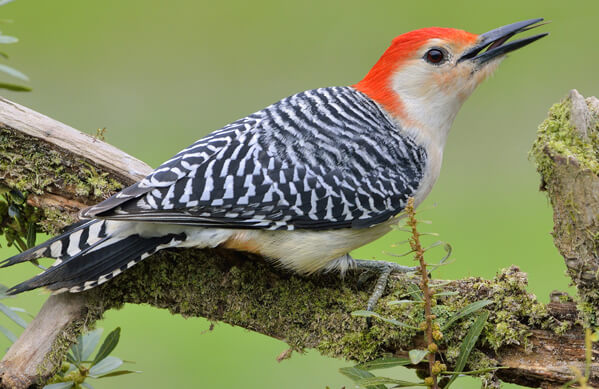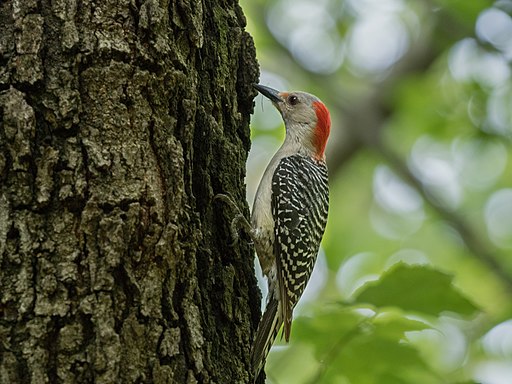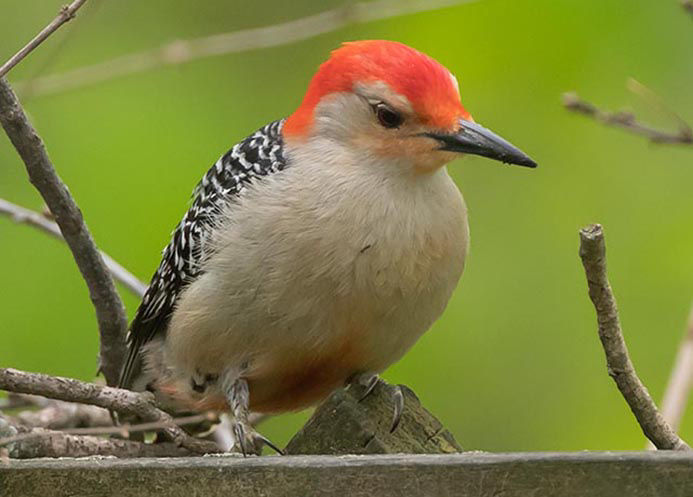Woodpeckers in Florida: Identification Tips and Habitat Preferences
Woodpeckers in Florida: Identification Tips and Habitat Preferences
Blog Article
Woodpeckers Unleashed: Exploring the Marvels of These Skilled Tree Mountain Climbers
Woodpeckers, with their distinctive markings and rhythmic drumming echoing through wooded areas, hold an unique area in the bird world - Woodpeckers in Florida. As we delve into the detailed information of woodpeckers' nesting practices, feeding techniques, and the continuous conservation initiatives to shield these remarkable birds, a much deeper gratitude for their place in nature unfolds.
Composition and Adaptations
When analyzing the composition and adaptations of woodpeckers, one can observe exceptional features that make it possible for these birds to thrive in their specialized environmental particular niche. Woodpeckers are equipped with a suite of one-of-a-kind anatomical qualities that assist them in their woodpecking habits. Among one of the most prominent attributes is their solid, chisel-like beak, which is specialized for exploration into timber to uncover insects or produce nesting tooth cavities. This beak is sustained by strong neck muscle mass and a very developed head framework that functions as a shock absorber, permitting woodpeckers to continuously eat trees without causing mind injury. Furthermore, woodpeckers have zygodactyl feet, with 2 toes facing onward and two encountering backwards, giving a company grasp on tree trunks while they search for food or drum for communication.
Additionally, woodpeckers have an unique tongue structure that is long, barbed, and sticky, allowing them to draw out insects from holes in wood. This customized adjustment enables woodpeckers to exploit a food resource that is hard to reach to many various other bird varieties. Generally, the composition and adaptations of woodpeckers display the exceptional evolutionary solutions that have actually permitted these birds to thrive in their arboreal environment.
Drumming Behavior
Having actually checked out the anatomy and adjustments of woodpeckers, the emphasis currently changes to recognizing their drumming actions, a distinctive element of their communication and territorial screens. Drumming is an essential form of communication amongst woodpeckers, serving multiple purposes such as developing regions, drawing in mates, and signaling alarm system. Each woodpecker varieties has an one-of-a-kind drumming pattern that assists individuals recognize members of their very own species and distinguish them from competitors or predators.
Woodpeckers produce drumming sounds by rapidly pecking on resonant surface areas such as dead trees, utility poles, and even steel items, creating a collection of rhythmic beats. The strength and speed of drumming can vary based upon the purpose; for example, a fast drumming series might symbolize aggressiveness towards trespassers, while a slower and softer drumming pattern could show courtship (Woodpeckers in Florida). In addition, woodpeckers might adjust the regularity and period of their drumming to communicate details messages effectively
Nesting Routines
Exploring the nesting routines of woodpeckers discloses interesting understandings right into their reproductive actions and environment options. Woodpeckers are recognized for their one-of-a-kind nesting choices, often digging deep into dental caries in trees click reference to create sheltered rooms for raising their young. These dental caries offer not only as a nesting site but also as a protected refuge from predators and inclement climate.
Woodpeckers show a high level of fidelity to their nesting sites, usually returning to the very same area time after time. This behavior highlights the relevance of appropriate environment accessibility for their reproductive success. The choice of a nesting site is essential for woodpeckers, with factors such as tree varieties, elevation, and decay phase playing significant duties in their decision-making procedure.
Surprisingly, some woodpecker varieties are known to excavate multiple dental caries within their area, giving themselves with alternative nesting options. This approach might work as a type of insurance policy versus potential risks or disruptions to their key nesting site.

Feeding Strategies
Woodpeckers utilize a variety of specialized feeding techniques to acquire their main food sources. One of the most distinct feeding behaviors of woodpeckers is drumming, which involves quick pecking on trees to reveal bugs under the bark. This drumming not only aids them locate prey but also acts as a method of interaction with other woodpeckers. Woodpeckers have strong, chisel-like beaks that permit them to pierce right into timber easily. When a hole is produced, they utilize their lengthy, barbed tongues to extract bugs such as ants, beetles, larvae, and crawlers. These tongues are coated with sticky saliva that aids click reference trap the prey. Woodpeckers are likewise known to excavate cavities in trees to accessibility concealed insect larvae or sap. Some types, like the acorn woodpecker, shop nuts in specially created openings called granaries. This critical saving of food assists them make it through during food shortage periods. Woodpeckers are absolutely amazing in their feeding strategies, showcasing flexibility and knowledge in obtaining their nutrition.
Preservation Initiatives
Among the elaborate feeding strategies showed by woodpeckers, the preservation efforts focused on securing these interesting birds play an essential duty in maintaining their environments and populations. Woodpeckers encounter numerous risks to their survival, consisting of habitat loss due to logging, environment modification altering their environments, and look these up collisions with manufactured structures such as buildings and automobiles - Woodpeckers in Florida. Guardians are actively working to address these obstacles and make sure the long-lasting health of woodpecker varieties

Education and learning and public recognition projects are likewise essential elements of woodpecker conservation initiatives. By elevating recognition concerning the value of these birds in preserving healthy and balanced forest ecological communities, preservationists can amass assistance for environment preservation campaigns and promote responsible land monitoring methods. Through joint initiatives in between scientists, policymakers, and regional areas, we can interact to safeguard a future where woodpeckers flourish in their all-natural environments.
Final Thought

Report this page